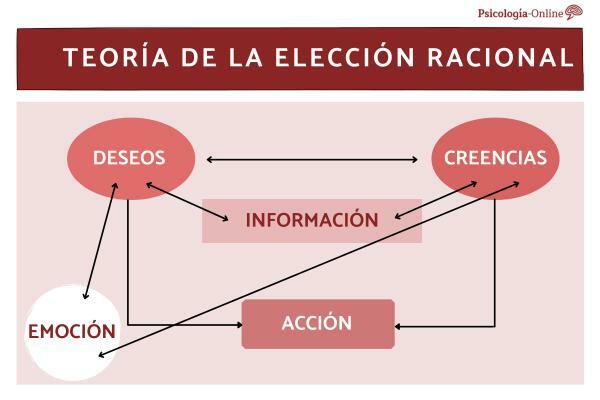The environments and activities in which people participate are defined by their goals. These are not exclusively individual but are immersed in ancient traditions that we cannot do without. The activities that people carry out in their community are inseparable from instruments that help shape them and that are clothed with meaning.
In this context, it is assumed that there is a dialectical relationship between the two elements. Children and adults grow and develop together as they transform the world and the environment in which they live. Systems of human activity "People are objects with minds, but also with hands." This phrase conveys many of the ideas behind the work of Michael Cole and his collaborators.
We will stop at what could be considered some fundamental pillars on which his way of understanding the basic structure of the human activity. From this perspective, the natural unit of analysis to study behavior is activity systems, understood as the systems of relationships between historically conditioned individuals and their closest culturally organized environments. We will look at a common activity in Western homes, the traditional duties. The importance of an interaction between the subjects (let's imagine a mother and her daughter), and the object to which the activity is oriented and that, in turn, it is modeled or transformed into a result with the help of external and internal instruments (physical and symbolic), in this case, the book of text.
It should also be taken into account that this activity takes place in a community (in this case the family or the school), which includes multiple individuals and groups sharing similar goals. In addition, these activities are governed by similar rules that contribute to the distribution of tasks and social roles among members of the community, in this case those performed by a mother and a daughter. In addition, in this activity system there is an exchange and distribution of objects between the individuals that make up the bidirectional human activity, that is, people by transforming instruments and objects are transformed into themselves.
Finally, the fact of being before a dynamic system necessarily leads to the notion of time, which in relation to life Human has to be understood as history since we humans interpret the past and the future in terms of experience cultural. This analysis model is helping to generate new epistemological frameworks from which to interpret human activity that develops over time. At the core of this proposal is the concept of distributed knowledge. The idea behind this concept is a criticism of the existence of a central processor that would explain the construction of human knowledge, regardless of any influence of the situation. Cole and Engeström They have re-explored this concept and offer us a path through which the investigation can be progressed. In his opinion, knowledge is distributed in multiple areas. There is, first of all, a knowledge distributed in the individual: the heterogeneity of the activity in the brain could be conditioned, At least in part, due to the structure of the processes in which the person participates, both in their sensory and in their symbolic aspects.
They also refer to knowledge distributed in culture. In this sense, the combination of the goals, the instruments and the environment simultaneously constitute the context of behavior and allow us to say that knowledge is distributed in that context. Third, a notion of culture distributed among people requires thinking that knowledge is distributed among them by virtue of their social roles, hence distribution also means sharing the vision from work. Finally, the authors refer to a distribution of knowledge in time, even retracting to phylogeny. In short, distributing knowledge does not mean in any case doing without the individual, but rather expanding the framework in which it has to be explained.
Everyday practices The concept of practice is especially useful when it comes to exploring the human activity without disregarding the goals of those who carry it out or the cultural context in which it takes place. update. Practices, to be interpreted within the framework of a culture, are closely related to daily activity and with routine and immersed in the social structures in which a set of actors operate, attributing to them, in turn, a meaning. The practices, they tell us Miller and Goodnow, provide a way to describe development in context. Three are, in principle, the consequences of this statement. In the first place, it is about going beyond the individual as a unit of analysis to consider it in its cultural, social and historical context. Second, it seeks to transcend the model of a passive individual, made up of social agents, to make way for an active, constructive and transformative person.
The individual and the context are treated as interdependent and mutually active. Finally, the separation that has traditionally existed between thought and others is broken. aspects of life and it is recognized that the practice is part of the construction of identity personal. Cole considers the context as those that surround the activity but that at the same time is interwoven in it because only from it do the goals of the individuals and the instruments that are managed to reach them. The practices reflect or identify a social and moral order, and provide a basis for understanding the beliefs and values of those who act. In this sense, the practices are not neutral but are loaded with ideas about what is natural, mature, morally correct, or aesthetically pleasing.
Sharing them contributes to creating an awareness of identity in the group. Practices provide a way for children to participate in culture, and culture is both reproduced or transformed. It is thus highlighted that different cultures structure in a different way the path by which the little ones are going to participate in it. This is the meaning that he attributes to it Rogoff. Practices do not exist in isolation. Each practice has a history and is part of a network in which, along with other practices, alternatives are offered to integrate into the community. In this sense, development can be seen as a learning process in which individuals face different options through limits and combinations that oneself must accept for oneself and for others. In addition, the fact of living in different contexts requires learning multiple practices that have to be integrated.
The nature of participation it has its consequences that are sometimes limited to particular situations and that refer, above all, to the way in which people understand a task or use a strategy. Nunes, for whom practice and activity are almost synonymous, considers that symbolic instruments configure intellectual identity in the same way that physical instruments shape work practical. Saxe shows that the practices, in which individuals who commit themselves in the community to achieve certain goals, contribute to configuring and structuring their cognitive functions.
The concept of practice it is far from homogeneous. When analyzing human activity, from the notion of practice we move towards a new unit of analysis. New ways of understanding the relationships between the subject and objects, the mind and the physical, social or cultural world are then seen. This is the way Cole and Engeström approach it: "Our unit of analysis is based on a triad in which the subject, the world and the objects and mediating instruments (semiotic media) are not embedded or placed within each other but are constituted as moments of a simple process of lifetime. This triadic notion of mediated actions was advanced by Vygotsky as a model of the mind: the mind is not a system component, it is the emergent product of the interaction between people, objects and artifacts in the activity. The mind does not reside under the skin of the subject, nor is it inscribed in cultural instruments. The mind is a systematic quality of culturally mediated human activity ".


